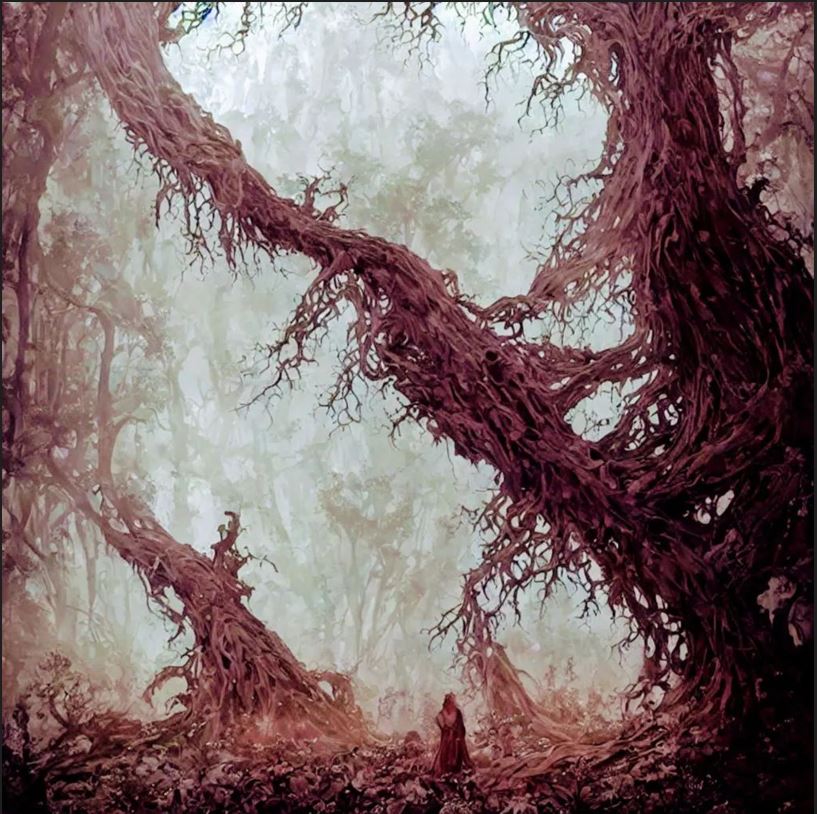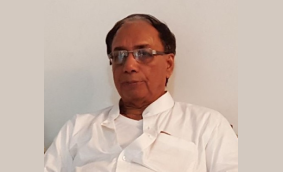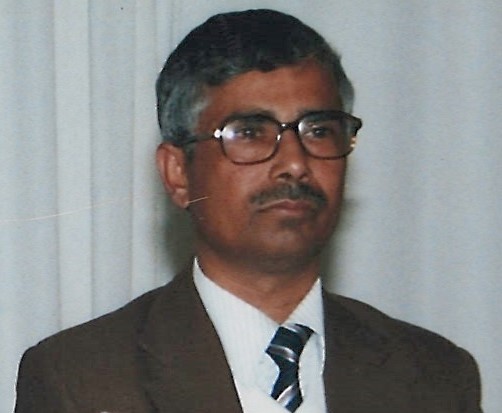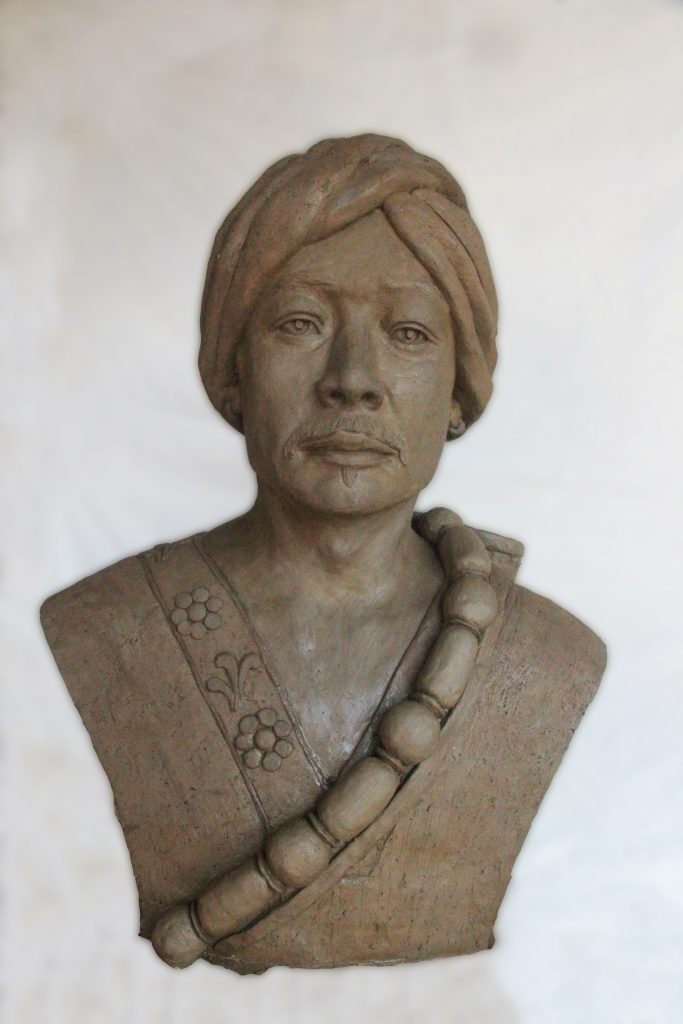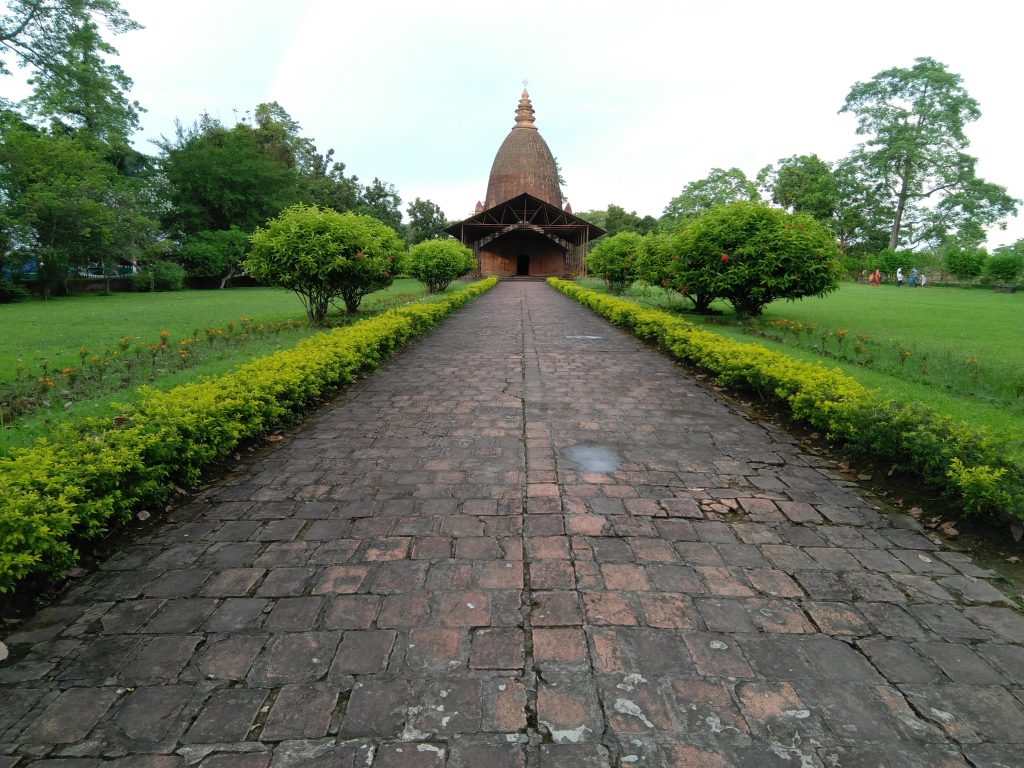
जम्बुद्वीप भरतखण्ड भारतवर्ष आर्यावर्त देश के प्राचीन शाश्वत् इतिहास के पृष्ठ में महिमामयी तथा वीरांगना नारियों के नाम स्वर्णिम अक्षरों में लिखा गया है। अखंड भारत के भूभाग एवं रत्नगर्भा धरित्री के कोख में जन्मे सौभाग्यवती नारियों का वर्णन कर पाना किसी भी कलमकारों के लिए सहज नहीं है। वह चाहेँ प्राचीन काल की विदुषी नारी के विषय में हो अथवा ऋषि-मुनियों का ही वर्णन हो अथवा मध्यकाल की वीरांगनाओं का वर्णन ही क्यों न हो। समय-समय पर ऐसी विदुषी द्वारा दिखाए गये साहसिक कदमों ने नारी जाति के कद को अनेक बार ऊँचा उठाया है। उसी क्रम में पूर्वोत्तर भारत के नारियों का योगदान भी इतिहास के पन्नों में पाया जाता है। वो चाहे आक्रमणकारियों के विरोध में आवाज उठाना हो अथवा देशहित को सर्वोपरि मानकर देशभक्ति सहित राष्ट्रधर्म पालन करने वाला कार्य हो अथवा परतन्त्रता से मुक्ति पाने के लिए किया गया संघर्ष ही क्यों न हो? ऊपर उल्लेख किया गया समग्र महामानवीय गुणों से परिपूर्ण पूर्वोत्तर भारत असम राज्य की वीरांगना जयमती का नाम वीरांगना नारियों के बीच का कभी न भूलने वाला नाम है। ऐसी स्वाभिमानी नारी, जिन्होंने अपने पति और देश के लिए दिया हुआ बलिदान तथा उनके गौरवमय ऐतिहासिक गाथा को प्रत्येक भारतवासियों को हृदयंगम करना और उनके बारे में जानना जरूरी है।
माता चन्द्रदारू और पिता लाइथेपेना बरगोहाञी की पुत्री जयमती कई भाई बहनों के बीच की थी, फिर भी वह माता-पिता तथा परिवार के सभी लोगों से ज्यादा प्यार – दुलार पाकर पली बड़ी थी। लाइथेपेना बरगोहाञी के पूर्वजों के साथ आहोम राजपरिवार का घनिष्ट सम्पर्क था। इसी सूत्र के तहत ही लाइथेपेना का भी आहोम राजा के साथ घनिष्ट सम्पर्क रहा। राज परिवार की छत्रछाया तथा अपने परिवार से अधिक प्यार दुलार पाने वाली सती जयमती छोटी उम्र से ही अधिक दायित्वशील, दक्ष और अत्यन्त बुद्धिमती थी।
उस समय आहोम राज्य के राजा थे गोबर राजा। गोबर राजा के तृतीय पुत्र थे गदापाणि। गदापाणि बहुत ही शक्तिशाली तथा साहसी थे। प्राय: राजकुमार गदापाणि जंगलों में शिकार करने हेतु जाया करते थे। एक दिन शिकार से लौटते वक्त वे भूख और प्यास से आतुर हो गदापाणि के घर पहुँचे और कुछ खिलाने के लिए आग्रह किया। सुशील तथा अतिथि परायण गुण सम्पन्न जयमती ने बहुत ही स्फूर्ति से भूख और प्यास से आतुर गदापाणि का बहुत अच्छी तरह से अतिथि सत्कार किया। उत्तम आतिथ्य से प्रभावित होकर जयमती को अपनी अर्द्धांगिनी के रूप में पाने की इच्छा उनके मन में प्रकट होने लगी। लावण्यमयी जयमती भी सुंदर, सुदक्ष तथा शक्तिशाली राजकुमार गदापाणि से प्रभावित हुई। दोनों परिवार की सहमति से जयमती और गदापाणि का आहोम के ‘चकलंग’ विवाह पद्धति अनुसार शुभ विवाह सम्पन्न हो हुआ । ‘त्याग नारी के जीवन का अलंकार है और पति उनका देवता है’ – इस आप्तवाक्य को शिरोधार्य कर जयमती ने अपनी वैवाहिक जीवन में कदम रखा। ससुराल में भी सासू माँ जयमती से असीम स्नेह करती थीं। उन दोनों का युग्म जीवन सुख – समृद्धि से व्यतीत होने लगा। दोनों को वैवाहिक जीवन के साक्षी स्वरुप दो सुंदर पुत्र संतान की प्राप्ति भी हुई।
गोबर राजा के मृत्यु पश्चात् उनका तृतीय पुत्र गदापाणि आहोम के राजा बना। उस समय राजसत्ता को लेकर अधिकारियों के बीच घमासान गृहयुद्ध शुरु हो गया । गुवाहाटी और निचले असम के आहोम राज प्रतिनिधि लालुकखोला बरगोहाञी ने कूटनीति एवं षड्यन्त्र कर सात दिन में ही गदापाणि को राजसत्ता से हटाया और चुलिकफा नामक चौदह वर्षीय बालक को खुद के निजी स्वार्थ सिद्धि के लिए सन् 1679 में राज सिंहासन पर बैठाया। छोटी-सी उम्र में राजा बनने के कारण चुलिकफा को ‘लरा रजा’ भी कहा जाता था। चतुर लालुकखोला ने कुशलतापूर्वक उनकी पाँच वर्ष की बेटी को सत्तासीन लरा रजा के साथ विवाह कर फिर शासन की बागडोर अपने हाथों में ले लिया। उसके बाद वह तमाम षडयन्त्र रचने लगा। आहोम राज्य में ऐसा एक प्रचलित नियम था कि अंगक्षत वाला कोई भी युवक राजा बनने का योग्य नहीं होगा। लालुकखोला ने इस नीति का गलत फायदा उठाते हुए राज्य में राजा बनने के योग्य युवकों को अंगक्षत करने का आदेश दे दिया। जयमती के पति गदापाणि लालुकखोला बरफुकन का सबसे बड़ा शत्रु था क्योंकि एक राजा होने के सभी गुण और योग्यता उनमे विद्यमान था। ‘लरा रजा’ और लालुकखोला के इस तरह के अनैतिक क्रिया-कलापों के कारण गदापाणि अपनी अर्धाङ्गिनी जयमती और दोनों बेटों को लेकर किसी गुप्त स्थान में रहने लगे। राजा के सैनिक गदापाणि को ढूँढते हुए उस स्थान पर पहुँच गए। अपने पति को शत्रु-पक्ष से बचाने तथा देश को सुशासक प्रदान करने के लिए जयमती गदापाणि से दूसरे जगह भागने के लिए कहा। पहले तो गदापाणि कहीं भागने के लिए राजी नहीं थे। पत्नी के बार-बार अनुरोध करने पर वह टाल नहीं पाते और दोनों बेटों को नानी के पास सुरक्षित छोड़कर गदापाणि नगापाहाड़ की ओर चल गए । लालुकखोला के आदमियों ने जयमत जयमती से गदापाणि का पता बार-बार पूछा लेकिन जया ने अपने पति का ठिकाना नहीं बताया। अत्याचारी लालुकखोला जयमती को बंदी बना कर ले गए और गदापाणि के बारे में पूछते हुए राजदरवार में उन पर अनेक प्रकार के अत्याचार करने लगे लेकिन जयमती अडिग रही और पति के विषय में कुछ भी नहीं बताया। अत्याचार सहन करती रही फिर भी मुँह नहीं खोली। शत्रु पक्ष जब जया से कुछ जान नहीं पाए तब और भी ज्यादा क्रुद्ध होकर जयमती को जेरेंगा पथार नामक एक खुले मैदान में ले ग्ए। काँटों से भरे हुए एक पेड़ पर जया को बाँधकर ” अपने पति को कहाँ छुपाया है?” यह प्रश्न बार-बार कर उसको शारीरिक और मानसिक अमानवीय अत्याचार करने लगे। –” राज्य शासन कर रहे भ्रष्ट सत्ताधारियों को गदापाणि जीवित रहने से ही सत्ताच्युत करना सम्भव हो पाएगा। यदि इन लोगों को गदापाणि का पता चल गया तो निश्चित ही उनको मार डालेंगे। उनकी मृत्यु से अच्छा है, ये लोग मुझे ही मार डालें। खुद के प्राण की आहुति देकर भी इन दुराचारियों के पंजे से भावी योग्य राजा को मैं बचाऊँगी ।” ऐसी बातें सोचते हुए अत्याचार सहन करने लगी। दुराचारियों ने उबलते हुए गरम पानी जयमती के शरीर पर फेंका और लोहे के चाबुक से प्रहार किया उसके उपरान्त भी परम तेजस्विनी क्रान्तिकारिणी नारी जयमती ने राजधर्म का पालन करते हुए क्रूर शासक के आगे मुँह नहीं खोला। उसी समय वहाँ एक दृश्य परिघटित होता है – गदापाणि नगापाहाड़ में स्थान बदल-बदल कर खुद को छुपाते हुए जयमती प्रति हो रहे कठोर अत्याचार का पता चला। वे छद्मवेश में उसी स्थान पर पहुँच जाते हैं, जहाँ जयमती कठोर अत्याचार की शिकार हो रही थी। अपनी प्रियतमा पत्नी को आँखों के सामने किया गया अत्याचार, उत्पीड़न देखकर उनका हृदय पीड़ा से दग्ध हो जाता है। चाबुक से निरन्तर पीटते हुए प्रताड़क कह रहे थे — “ओई तोर गिरियेक कोत आसे क’?” (अर्थात् तेरा पति कहाँ है बता) कहकर पत्नी को पिटते हुए देखकर छद्मवेशी गदापाणि खुद को रोक नहीं पाता और सामने आकर जयमती को कहता है – “ओइ, तइ तोर गिरियेकर कथा कोइ निदिय किय?” (अर्थात् – तुम अपने पति के बारे में क्यों बता नहीं देती?”) अपने पति की उपस्थिति का आभास जयमती को हो जाता है, वह गदापाणि को पहचान लेती है। तब तुरंत जयमती गदापाणि को यह स्थान छोड़ने के लिए इंगित करते हुए कहती है — “जोर मानुह तालै नाजाय किय? मइ नकउँ, नकउँ, नकउँ।” (जहाँ से आए हो वहीं क्यों नहीं जाते? मैं नही कहूँगी, नहीं कहूँगी, नहीं कहूँगी) वे अपनी पत्नी के दृढ़ संकल्प तथा कठोर निर्णय के आगे नतमस्तक होकर दुखी मन लेकर वहाँ से चले जाने को बाध्य हो गए। यह विछोड़ इन प्रेमी युगलों के जीवन की अंतिम विदाई बनी। अर्थात् यही थी गदापाणि और जयमती का अंतिम मुलाकात।
जेरेंगा पथार में 14 दिन तक निरन्तर अमानवीय अत्याचार सहते हुए अपने पति का ठिकाना “मैं कदापि नहीं कहूँगी” कहते हुए एवं अनेक यातनाएँ सहकर उसी पेड़ पर बँधी हुई जयमती ने सन् 1679 के 27 मार्च के दिन प्राण त्याग दिया । वीरांगना जयमती के महान त्याग के द्वारा लरा रजा तथा लालुकखोला के अन्याय तथा अत्याचार से असमवासी का उद्धार करने में सक्षम हुई । सन् 1681 से लेकर सन् 1696 तक गदापाणि गदाधर सिंह नाम से आहोम के राजा हुए। बाद में सन् 1696 – 1724 तक जया के ज्येष्ठ पुत्र रूद्र सिंह आहोम के राजसिंहासन पर अधिष्ठित हुए। वीरांगना जयमती के पुत्र रूद्र सिंह ने कुछ दिनों के बाद अपनी माता जयमती का अमानवीय अत्याचार सहन कर मृत्यु वरण किये गये स्थान ( जेरेंगा पथार ) पर ‘जयसागर’ नाम से एक पोखर का निर्माण किया और उसी जयसागर के ही पास ही “जयदौल” भी निर्माण किया। सन् 1714 – 1744 तक जयमती के कनिष्ठ पुत्र शिव सिंह आहोम के राज सिंहासन पर अधिष्ठित हुए। इस प्रकार राजसत्ता परिवर्तन करने में सक्षम अत्यन्त निडर दृढ़ निश्चयी भारतीय क्रांतिकारी नारी जयमती का नाम इतिहास के पन्नों में स्वर्ण अक्षर में अंकित किया गया है। जयमती के त्याग ने समग्र नारी जाति को गौरवान्वित किया है। वैसे तो इतिहास में बलिदान के अनेको गाथाएँ पढ़ने अथवा सुनने को मिलती हैं। उन सभी का बलिदान अपने अपने क्षेत्रों में महत्वपूर्ण हैं। आत्मबलिदान की परिसीमा अधिकतम् अथवा न्यूनतम कभी नहीं होती। आखिर बलिदान तो बलिदान ही होता है, यह सदैव महानतम होता है लेकिन जयमती के बलिदान नारी जगत के लिए विशेष महत्वपूर्ण एवं राष्ट्रधर्म के साथ संलग्न तथा राज्य के लिए सुयोग्य प्रशासक पति रूपी सुराजा का चयन और नियुक्ति का मोहर है। चौदह दिन तक का भीषण प्रहार झेलकर भी भावी सुयोग्य राजधर्म पालक राजा के सपने संजोकर मृत्यु को आलिंगन करने के लिए एकबार भी पीछे नहीं हटी। उन्होंने भारतीय सनातनी नारी के पतिधर्म का भी उतना ही पालन किया जितना उन्होंने सुयोग्य राजा को बचाने के लिए किया। ऐसी महिमामयी त्यागी वीरांगना नारी जयमती की महान् त्याग को स्मरण करते हुए प्रतिवर्ष 27 मार्च के दिन पूरे असम में ” जयमती दिवस” मनाया जाता है। महान् वीरांगना नारी जयमती की असीम त्याग, उनके दिखाए गए आदर्श तथा उनकी स्मृति हमारे बीच सदैव सजीव होकर रहेगा।
साभार ग्रंथ:
- Itihase Soaura Chasahata Bachar (ইতিহাসে সোঁৱৰা ছশটা বছৰ), Sarbananda Rajkumar ,(Guwahati: Banalata,2017)
- Tungkhungia Buranji Or A History Of Assam 1681-1826, S K Bhuyiyan, (London:Oxford University press,1933)
- Deodhai Asam Buranji: with several shorter chronicles of Assam, S K Bhuyiyan, (Calcutta:Department of Historical and Antiquarian Studies Assam,1932)
- जयमती कुँवरी, लक्ष्मीनाथ बेजबरूवा।
- जयमती कुँवरी मालिता, कृपानाथ फुकन
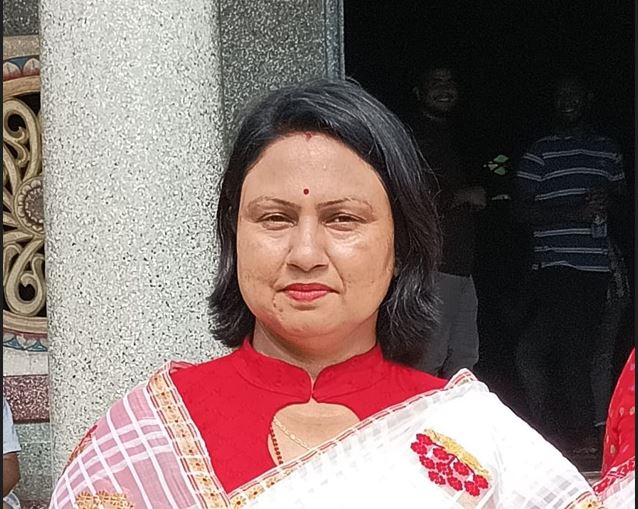
कल्पना देवी आत्रेय कल्पना असम के नगांव जिले के हाथीखोया गांव की रहने वाली हैं। वह एक शिक्षिका होने के साथ-साथ एक गृहिणी और लेखिका भी हैं। उनके लेखन में ऐतिहासिक महिला पात्र अधिक नजर आते हैं।

